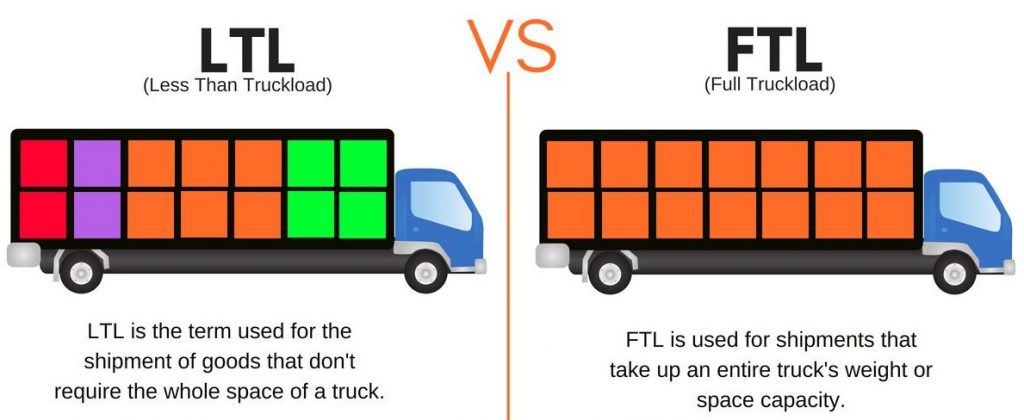It is essential to create a strategy that works to transport goods as quickly and less costly as possible and before a company makes the executive decision as to which way, they choose to ship goods they are a variety of factors to consider such as temperature, urgency destination, and availability. Whether deciding to ship less than truckload or full truck load, there are variety of profitable strategies that create new advantages in both LTL and FTL that we wanted to discuss, but first we want to provide explanations as to what each of them means as well as some bullets of the main advantages of both full truckload and less then truckload. We hope that by provides the explanation and advantages it may provide a new insight into the
Full Truck Load (FTL) is freight containing goods from one company, this is the ideal choice when shipping anywhere from 10 to 24 pallets or there is a high risk in shipments. Products or goods that are shipped through a means of FTL have a significantly lesser chance of any potential damages as there are no stops while transporting this freight.
Main advantages of FTL
- More capacity to load goods
- More room for larger shipments
- Goods are only handled during the loading and unloading process
- Shipped goods remain in unit until they have reached their final destination
- Exclusive use of available units
- FTL rates usually include rental fee, distance, refueling, drivers pay
Less Than Truckload (LTL) LTL is a combination of shipments from various companies who are sharing one space as well as the transport cost based on their product. Since LTL requires different shipments be delivered to different locations, the truck must make several stops to unload the various shipments. This shipping method is perfect for a small-medium sized company that is shipping its loads between 1-6 pallets. LTL is also referred to as load consolidation and the volume can depends on the weight on the load, however shipping LTL often comes with load consolidation services since many companies and parcels are sharing the same truck. Consolidating freight is a method to save both time and money on the parcels as long as they are headed to the same destination.
Main advantages of LTL
- Cheaper for shipments that are recurring
- Provides access to new market areas
- Reduces the procurement and manufacturing process
- Lowers inventory of slow-moving merchandise
- Maximize profits by filling the unused space
- Consolidating loads meaning less controllers are required
- Discount programs offered to companies who ship LTL regularly
It can often be difficult to determine which time of transportation to choose, however using a 3PL like TOP Worldwide can provide assistance in making that decision as our team of skilled individuals can help to compare cost and utilize the skills of our logistics company to find better ways to mange and book loads efficiently to combine all of the advantages to your preferred shipping method. There are also different kinds of transportation management systems that allow us to combine and compare costs and capacities to locate the best solution for any and all of your needs. A logistic company will work to find the best way to manage loads for you whether it be full truck load or less then truckload. As is with the remainder of the logistics process, both full truckload and less than truckload involve an implantation of thoughts and strategies, ways to think financially as well as thinking logically that can create the best solution for shipping needs. While there are many advantages in both LTL and FLT, it is important to figure out what is the primary concern for your shipping need. Ask yourself what is the size of your company? Does it make sense to fill a truckload or can you find other companies in the area that have shipments headed to the same general direction and can utilize the same truck to ship it as LTL opposed to an FTL truckload shipment.



